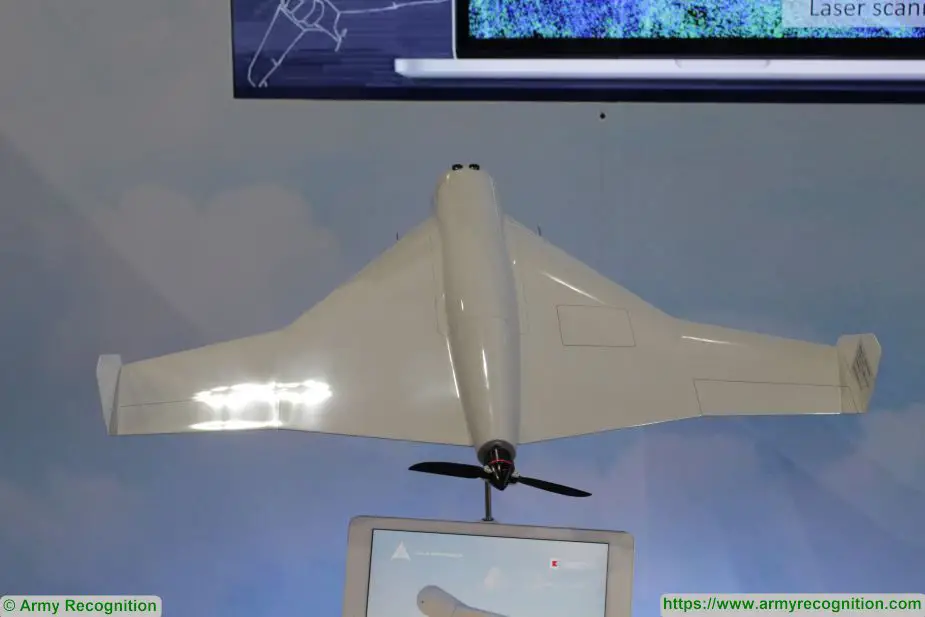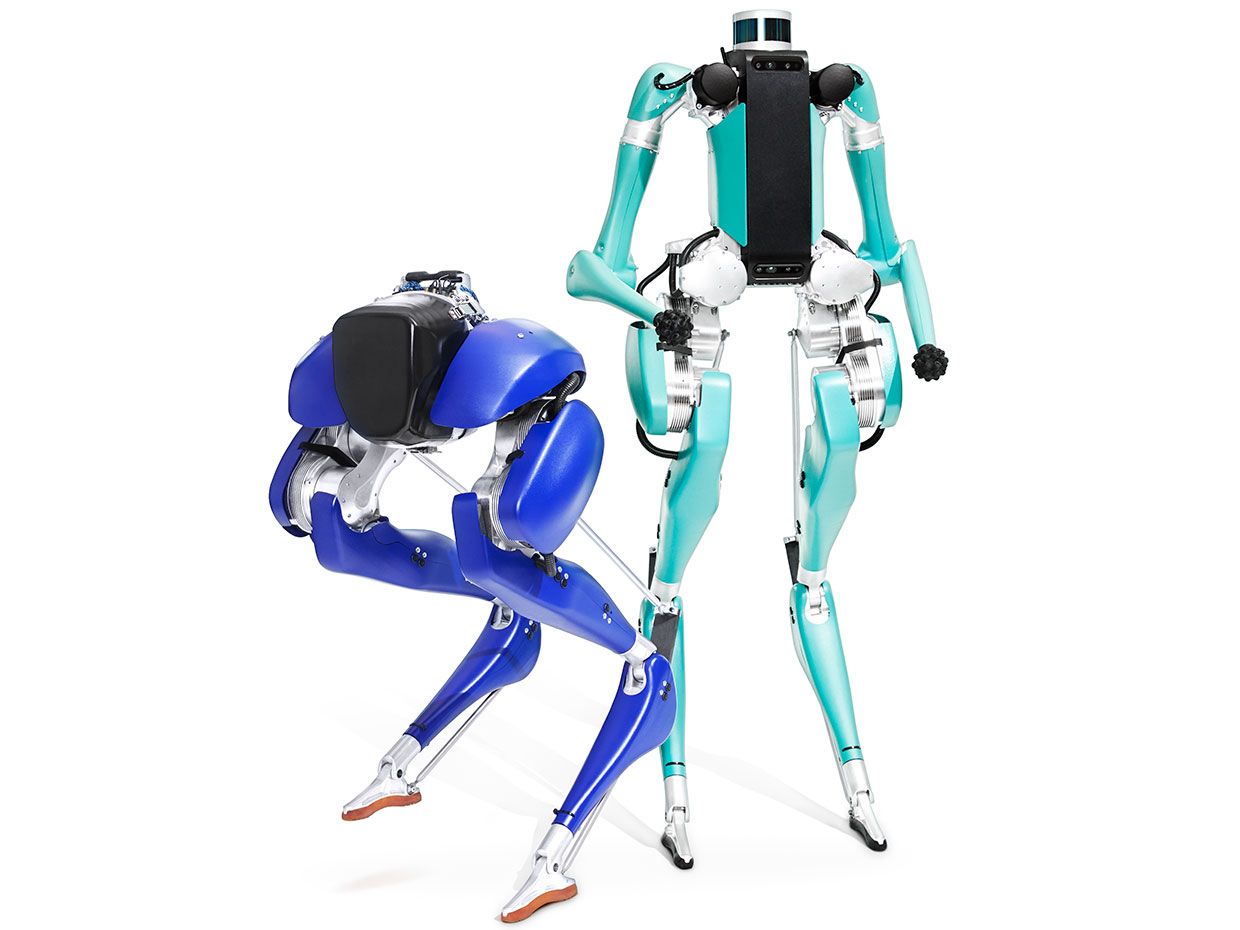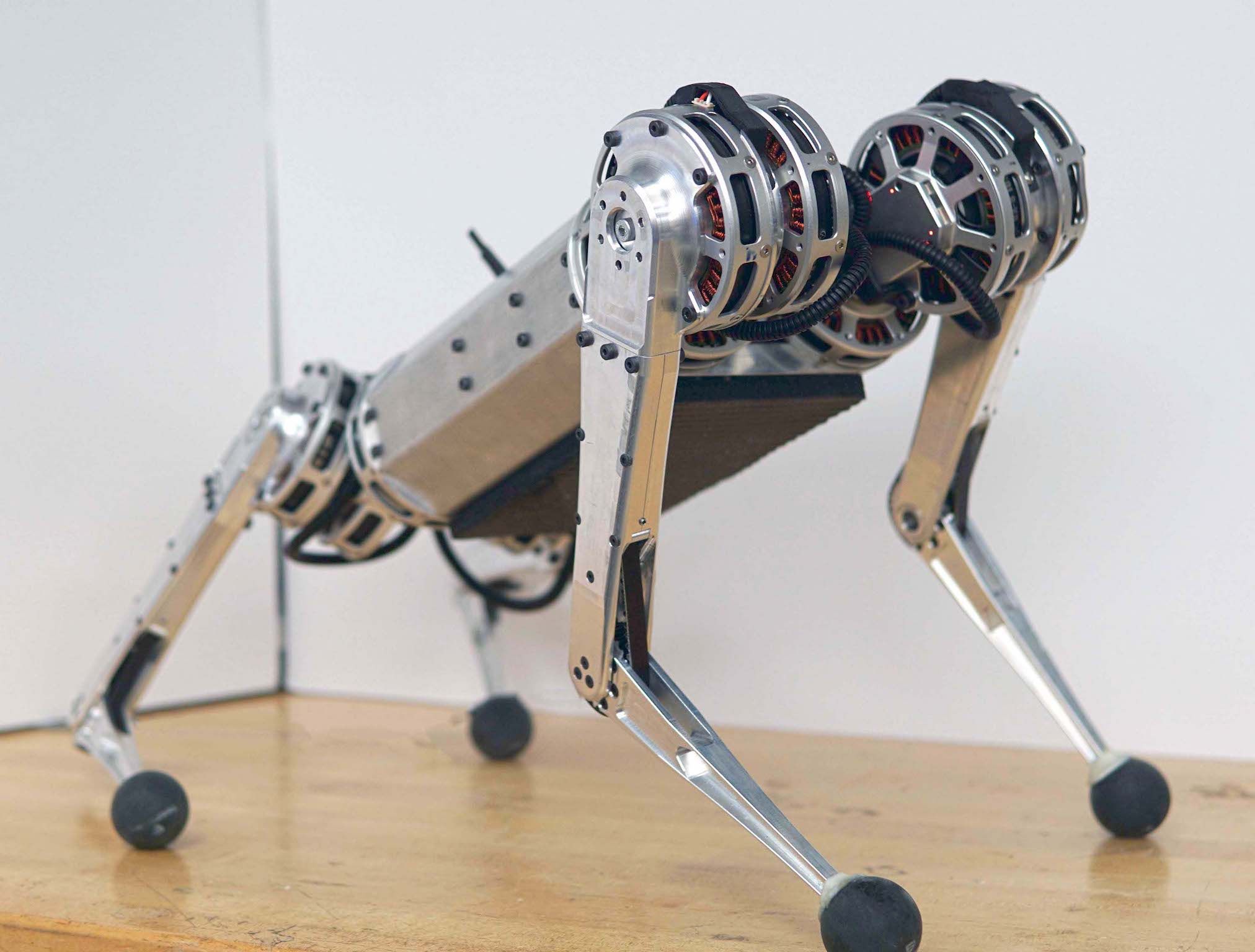https://www.military.com/defensetech/2019/02/14/army-buy-396-million-worth-pocket-sized-drones.htmlThe U.S. Army will soon field more pocket-sized drones to its squads and platoons under a recent $39.6 million contract award to FLIR Systems Inc. to support small-unit reconnaissance efforts.
The FLIR Black Hornet Personal Reconnaissance System, or PRS, resembles a tiny helicopter and flies almost silently. Soldiers can use the onboard camera to look around corners in urban areas or recon unfamiliar terrain.
"The highly capable nano-unmanned aerial vehicle (UAV) systems delivered under this contract will support platoon and small-unit level surveillance and reconnaissance capabilities as part of the Soldier Borne Sensor (SBS) Program," according to a recent FLIR press release.
The Army awarded the first SBS phase contract to FLIR for an initial batch of Black Hornets in June, the release states. This latest contract will expand the use of FLIR's Black Hornet for the SBS effort.
Install the app
How to install the app on iOS
Follow along with the video below to see how to install our site as a web app on your home screen.
Note: This feature may not be available in some browsers.
You are using an out of date browser. It may not display this or other websites correctly.
You should upgrade or use an alternative browser.
You should upgrade or use an alternative browser.
UAV / UCAV / LAR (robotit) Uutiset ja jutut
- Viestiketjun aloittaja Raveni
- Aloitus PVM
intternetsoturi
Majuri
Uutta, pienempää Harpy-droonia IAI:lta:
Tässä lista niistä jenkkien muutoksista harrastelijalentäjällä
https://spectrum.ieee.org/automaton/robotics/drones/faa-updates-drone-rules-for-everyoneFor recreational drone users, that’s it, and the other rules remain the same:
- Register your drone
- Fly your drone at or below 400 feet
- Keep your drone within your line of sight
- Be aware of FAA Airspace Restrictions
- Respect privacy
- Never fly near other aircraft, especially near airports
- Never fly over groups of people, public events, or stadiums full of people
- Never fly near emergencies such as fires or hurricane recovery efforts
- Never fly under the influence of drugs or alcohol
- Don’t act like a fool

https://www.armyrecognition.com/ide...ala_aero_presents_its_kub_kamikaze_drone.htmlKalashnikov concern and ZALA AERO GROUP introduce new smart weapon – unmanned combat aerial system «KYB-UAV» at International defence exhibition “IDEX 2019” stand A2-036 in Abu Dhabi, UAE.
The loitering ammunition KUB-UAV «KYB-UAV» precisely hits ground targets, delivering specific payload to target coordinates. The target coordinates are specified manually or acquired from payload targeting image. The KUB has a flight speed of 80 to 130 km/h, an endurance of 30 min and have a maximum payload of 3 kg.
The key advantages of the system are: High precision, Hidden launch, Silent operation, Simple to operate .The UCAS «KYB-UAV» has successfully completed tests.
https://yle.fi/uutiset/3-10658302Lentokone ja drone olivat vaarassa törmätä toisiinsa Valkeakoskella helmikuun alkupuolella. Onnettomuustutkintakeskus tiedottaa, että se aloittaa turvallisuustutkintalain nojalla tutkinnan vakavasta vaaratilanteesta.
– Ilmavoimien Learjetin ja Pirkanmaan pelastuslaitoksen dronen yhteentörmäysvaara tapahtui Valkeakoskella, onnettomuustutkintakeskus kertoo tiedotteessa.
Onnettomuustutkintakeskuksen johtaja Veli-Pekka Nurmi kertoo, että Ilmavoimien lentokone oli normaalilla tehtävällä lentämässä matalalla. Nurmen mukaan vaaratilanne tapahtui 6. helmikuuta puolen päivän aikaan Valkeakosken keskustan ulkopuolella, sen itäpuolella.
Ilmavoimat käyttää Learjet-suihkukonekalustoa muun muassa materiaali- ja henkilökuljetuksiin.
Dronen lennättäjä havaitsi vaaran
Onnettomuustutkintakeskus sai tiedon tapauksesta Pirkanmaan pelastuslaitokselta.
– Dronen lennättäjä havaitsi välittömästi tämän tilanteen, Nurmi sanoo.
Tilanteessa pelastuslaitos oli harjoittelemassa dronen eli kauko-ohjattavan kuvauskopterin käyttöä. Sekä lentokone että kuvauskopteri olivat alle 150 metrin korkeudessa valvomattomassa ilmatilassa.
Sitä ei vielä tiedetä, kuinka lähellä drone ja lentokone olivat toisiaan.
– Tämä tullaan selvittämään tässä tutkinnassa. Alustavan tutkinnan perusteella olemme tulkinneet, että tämä oli vakava vaaratilanne, Nurmi sanoo.
Ensimmäinen dronea koskeva tutkinta
Nurmen mukaan tutkinta on tärkeä sen vuoksi, että miehittämättömien ilma-alusten käyttö on lisääntynyt selvästi. Onnettomuustutkintakeskus ei ole aiemmin tutkinut droneen liittyvää tapausta.
– Pääpaino on siinä, että saataisiin kehitettyä pelisääntöjä siihen, miten dronea turvallisesti lennetään ilman, että se vaarantaa muuta lentoliikennettä, Nurmi sanoo.
Yle uutisoi viime heinäkuussa, että droneista aiheutuvat läheltä piti -tilanteet ovat roimassa nousussa Suomessa.
Tutkinta kestää arviolta 6–9 kuukautta.
Tutkintaryhmän johtajaksi nimetään psykologian tohtori Mika Hatakka ja jäseniksi liikennelentäjä Mika Kosonen sekä kapteeni evp. Raine Lehtonen. Tutkinnan johtaja on ilmailuonnettomuuksien johtava tutkija Kalle Brusi.
Pelastuslaitos aloittamassa drone-toimintaa
Pirkanmaan pelastuslaitokselle dronejen käyttö on vielä varsin uutta, kuten pelastuslaitoksille muuallakin Suomessa. Pelastuspäällikkö Esko Kautto kertoo, että Pirkanmaalla käynnissä on henkilöstön koulutus kopterin käyttöön.
Pelastuslaitos on ottamassa kuvauskoptereita käyttöön, jotta niiden avulla saataisiin tilannekuvaa onnettomuuspaikalta.
Kautto kertoo, että Valkeakoskella dronen käyttöä harjoiteltiin pelastuslaitoksen muun harjoituksen yhteydessä. Kautto pitää hyvänä, että läheltä piti -tilanne tutkitaan.
– On hyvä, että asia tutkitaan perusteellisesti, jotta jatkossa voidaan välttää tällaiset tilanteet, Kautto sanoo.
Kauton mukaan Valkeakoskella harjoittelu tapahtui voimassa olevien suositusten mukaan. Pelastuslaitos oli ilmoittanut harjoituksesta etukäteen, ja teki ilmoituksen myös tapahtuneesta vaaratilanteesta.
Pirkanmaan pelastuslaitos aikoo jatkaa henkilöstön kouluttamista dronen käyttöön.

https://spectrum.ieee.org/robotics/humanoids/building-robots-that-can-go-where-we-goRobots have walked on legs for decades. Today’s most advanced humanoid robots can tramp along flat and inclined surfaces, climb up and down stairs, and slog through rough terrain. Some can even jump. But despite the progress, legged robots still can’t begin to match the agility, efficiency, and robustness of humans and animals.
Existing walking robots hog power and spend too much time in the shop. All too often, they fail, they fall, and they break. For the robotic helpers we’ve long dreamed of to become a reality, these machines will have to learn to walk as we do.
We must build robots with legs because our world is designed for legs. We step through narrow spaces, we navigate around obstacles, we go up and down steps. Robots on wheels or tracks can’t easily move around the spaces we’ve optimized for our own bodies.
Viimeksi muokattu:
https://www.armyrecognition.com/ide...idex_2019_nexter_showcases_its_optio-x20.htmlThe Optio-X20 is the weaponized implementation of Nexter’s new range of Multimissions Tactical Robotics Systems. Armed with Arx 20 RCWS, this open-architecture tracked drone is specifically designed for perimeter observation, reconnaissance, and target engagement tasks. With the Arx 20, its 20mm automatic cannon and 7.62mm, both gyro-stabilized, Optio-X20 is able to handle up to level 4 protected targets.
Optio-X20 meets the operational requirements for surveillance, protection, security, and combat missions, on open modern battlefields as well as in urban areas.
Thanks to Nexter's development of innovative intelligent features on the mobility side, Oprtio-X20 allows the operator to focus on its mission rather than navigation.
Its main armament is a 20M621 Cannon - 20X102 standard OTAN, and MAG 58 machine gun (optional) - 7.62 x 51 standard OTAN for the secondary armament, for a fire rate of 750 rds//min for the main cannon, and 800 rds/min for the Mag 58.
The Optio-X20 is equipped with a Dual field color camera day, IR Dual lens uncooled and laser range finder.
Its maximum speed goes up to 22.5 km/h and it can handle a maximum side slope of 30%
Viimeksi muokattu:
Why the Military Are Worried About Drones Falling Into The Wrong Hands
https://www.defenceprocurementinter.../air/commercial-off-the-shelf-drones-and-isis
https://www.defenceprocurementinter.../air/commercial-off-the-shelf-drones-and-isis
Avalon 2019: General Atomics firms up Team Reaper Australia
https://www.janes.com/article/86861/avalon-2019-general-atomics-firms-up-team-reaper-australia
https://www.janes.com/article/86861/avalon-2019-general-atomics-firms-up-team-reaper-australia
http://thedrive.com/the-war-zone/26...ombat-drone-for-australias-air-force-tomorrow
The War Zone was first to report, Boeing is set to unveil a stealthy unmanned combat air vehicle, or UCAV, for the Royal Australian Air Force at this year's Avalon Air Show in Australia. The pilotless plane appears to be a previously unseen clean sheet design and will be capable of operating as a "loyal wingman" with manned aircraft, such as Australia's F-35 Joint Strike Fighters.
The Australian Broadcasting Company (ABC) was first to get the details of the new drone on Feb. 26, 2019. The day before, Boeing had teased the official reveal of the unmanned aircraft, which is still scheduled to come on Feb. 27, 2019.
The War Zone was first to report, Boeing is set to unveil a stealthy unmanned combat air vehicle, or UCAV, for the Royal Australian Air Force at this year's Avalon Air Show in Australia. The pilotless plane appears to be a previously unseen clean sheet design and will be capable of operating as a "loyal wingman" with manned aircraft, such as Australia's F-35 Joint Strike Fighters.
The Australian Broadcasting Company (ABC) was first to get the details of the new drone on Feb. 26, 2019. The day before, Boeing had teased the official reveal of the unmanned aircraft, which is still scheduled to come on Feb. 27, 2019.
An Anglo-French project to develop and fly an unmanned combat air vehicle (UCAV) demonstrator has officially ended, with the aircraft having failed to get off the drawing board.
BAE Systems and Dassault – as well as engine partners Rolls-Royce and Safran, plus systems specialists Leonardo and Thales – had been working on the project, following the signing of the Lancaster House treaty between France and the UK in 2010.
Neuron UCAVin lentotestejä sen sijaan jatketaan Dassaultilla.
https://www.flightglobal.com/news/articles/dassault-confirms-end-of-anglo-french-ucav-work-456199/
BAE Systems and Dassault – as well as engine partners Rolls-Royce and Safran, plus systems specialists Leonardo and Thales – had been working on the project, following the signing of the Lancaster House treaty between France and the UK in 2010.
Neuron UCAVin lentotestejä sen sijaan jatketaan Dassaultilla.
https://www.flightglobal.com/news/articles/dassault-confirms-end-of-anglo-french-ucav-work-456199/
https://www.theregister.co.uk/2019/02/27/boeing_loyal_wingman_fighter_jet_drone/Boeing has built an autonomous military aeroplane that flies in formation with a manned fighter jet to ward off electronic warfare attacks. Reports say the craft could be modified to carry and use its own weapons.
The electronic warfare drone was built for the Royal Australian Air Force (RAAF) by the American aerospace conglomerate and is roughly the size of a traditional military fast jet, according to the Australian Broadcasting Corporation.
"Its primary purpose would be to conduct electronic warfare and reconnaissance missions, particularly in environments where it is considered risky to send manned aircraft," reported the Aussie state broadcaster.
Car mag The Drive, which has a mil-tech subsection, followed up the ABC's scoop with some all-important detail, revealing that the UAV:
- Can fly with or without a manned partner
- Has a range of roughly 2,000 miles (about 3,220km)
- Is 38 feet (11.5m) long and uses a bizjet-class engine
- Modular design for "snap-in" payloads and rapid reconfiguration capability
- Initial configuration will be sensor/intelligence and electronic warfare focused
- Controlled via ground station, other aircraft, and has some level of autonomy that can scale for the mission
- Will team with other Boeing-made jets EA-18G, F/A-18E/F, E-7 Wedgetail and P-8 Poseidon
Of the aircraft designations at the end of that list, the -18s are Hornet fighter jets, as flown by the US, Canada and Australia among others, while the Wedgetail and Poseidon are Boeing 737s modified to carry military radars instead of passengers. The UK RAF is buying a small number of Poseidons, but not the Loyal Wingman drones.
Developing an unmanned military aeroplane that can fly along with a manned fighter jet is a big step forward for the aerospace industry – and one that will cause unease among those worried about robot war machines. For now, the Loyal Wingman is relatively low key: it carries jamming equipment and sensors rather than missiles, but the ability to hang armaments off the thing won't be far from anyone's mind.
One immediate scenario that suggests itself to your correspondent is fitting a Loyal Wingman with anti-radiation missiles. Fly such a drone in front of your manned jets: if they detect a hostile radar within range, they could be set up to automatically launch a missile that homes in on the radar's own emissions. In situations like the erupting border war between India and Pakistan, anti-radiation missiles are very useful for "blinding" an enemy's own defensive radars.
The future has arrived, and in a few short years it could be exactly what we feared.
https://biomimetics.mit.edu/MIT’S new mini cheetah robot is the first four-legged robot to do a backflip. At only 20 pounds the limber quadruped can bend and swing its legs wide, enabling it to walk either right side up or upside down. The robot can also trot over uneven terrain about twice as fast as an average person’s walking speed.
https://www.festo.com/group/en/cms/13508.htmUnlike the human hand, the BionicSoftHand has no bones. It controls its movements via the pneumatic bellows structures in its gripper fingers. When the chambers are filled with air, the gripper fingers bend. If the air chambers are empty, the gripper fingers remain stretched. The thumb and index finger are additionally equipped with a swivel module, which allows these two gripper fingers to be moved laterally. This gives the bionic robot hand a total of twelve degrees of freedom.
The bellows in the gripper fingers are enclosed in a special 3D textile cover which is knitted from both elastic and high-strength fibres. This means that the textile can be used to exactly determine at which points the structure expands, thereby generating force, and where it is prevented from expanding.

https://spectrum.ieee.org/automaton/robotics/robotics-hardware/mit-mini-cheetah-accelerate-researchEarlier this month, MIT posted a video of Mini Cheetah, a small quadruped robot from the lab of Sangbae Kim. We wanted to make sure you saw the video as soon as possible, which is why we featured it in Video Friday, but of course we wanted to know more about the robot. So last week we spoke a little bit with Sangbae and asked him a few questions about Mini Cheetah’s design and his future plans for the robot.
IEEE Spectrum: Why make a smaller version of Cheetah?
Sangbae Kim: This is mostly for research acceleration. If you talk to anyone working with robots they can tell you how painful it is: Robots are fragile, dangerous, not enough torque, hard to model. There are a bunch of problems. If you have a robot like Cheetah 3, what is the actual time that you’re running it? It’s probably 1 percent or less, because it’s hard to run, it’s dangerous, or if something breaks, it’s down for a month. With Mini Cheetah, you can run it like 5 hours a day. We’ve done 3-hour long demos with no problem. Basically, we’ve reached a level where it’s so reliable that we can give it to other groups that are suffering a lot with their hardware.
Mini Cheetah is just about the perfect size. Twenty pounds (9 kilograms) is not too small but not so big that it’s dangerous or fragile. This robot—we used it for 12 months, and we didn’t have to change a single mechanical component. It’s mainly our actuator technology. We designed the machine to be able to absorb the impacts, jumping and landing and so on. We’ve reached 2.5 meters per second, which is already fast for its size, but in theory it can run up to 4 meters per second—that’s reaching the maximum speed of Cheetah 3.
Not breaking is a big deal for research robots, because it means that you can try things on them, or trust your students to try things on them, without first setting up quadruplicate e-stops, putting on body armor, getting out your checkbook, and standing next to the fire alarm. As Sangbae points out, a rugged robot means that you can work less in simulation, which is much more fun (and potentially more productive) and seriously how else do you come up with all of those outtake videos?
The plan is to build 10 Mini Cheetahs, five or six of which will be pressed into service in different MIT labs to tackle different problems all at once, hopefully accelerating development by a factor of, well, five or six, I suppose. The other four or five robot could make their way out of MIT to groups that have experience with legged robots. Eventually, the hope is to have, according to Sangbae, “a robotic dog race through an obstacle course, where each team controls a Mini Cheetah with different algorithms, and we can see which strategy is more effective.” The race will likely be human-controlled initially, but eventually, Mini Cheetah will be going fully autonomous. And once it does, we’re keeping our fingers crossed for an affordable consumer version in the near future.
Huhta
Greatest Leader
Iskukykytutkimus suositti muun ohella tunkeutumiskykyisen lennokkijärjestelmän hankintaa, mitä ilmeisimmin kaukovaikutusaseiden maalittamiseksi. Sellaista ei ole saatu, vaikka on odotettu 15 vuotta. Saadaankohan koskaan ja kauanko vielä odotetaan? Varmaan ainakin toiset 15 vuotta?
Sinänsä mielenkiintoisiin vaihtoehtoihin kuuluvat ainakin Avenger, RQ-170 Sentinel ja RQ-180. Paljon on myös teknologiademonstraattoreita, keskeneräisiä ja eri käyttötarkoituksiin suunniteltuja lennokkeja. Mieleen tulee mm. nEUROn, Taranis, Barracuda, XQ-58 Valkyrie ja MQ-25.
Ehkä vielä jonakin päivänä?
Sinänsä mielenkiintoisiin vaihtoehtoihin kuuluvat ainakin Avenger, RQ-170 Sentinel ja RQ-180. Paljon on myös teknologiademonstraattoreita, keskeneräisiä ja eri käyttötarkoituksiin suunniteltuja lennokkeja. Mieleen tulee mm. nEUROn, Taranis, Barracuda, XQ-58 Valkyrie ja MQ-25.
Ehkä vielä jonakin päivänä?

Saadaankohan koskaan ja kauanko vielä odotetaan?
Viisi vuotta. Huomaa että drone teknologiassa tällä hetkellä 5 vuotta on pitkä aika. Vain kolme vuotta sitten suoritetussa Darpa pelastuskokeessa kaikki koneet mokailivat, sen jälkeen tuli ensimmäinen parvi ja kun nyt katsoo niin kaikki on autonomisia ja melko kaukana siitä kuin mitä se oli. Naapuri on viimeisen kymmenen vuoden sisällä kehitellyt heidän UCAVin. Euroopan sotateollisuuden firmoilla on omansa, hieman enemmän kesken olevat. Ehkä ne tulisivat valmiiksi jos sitä sodan uhkaa olisi enemmän.
